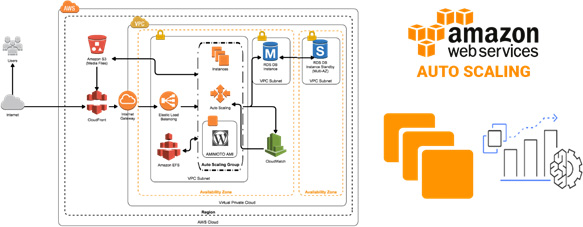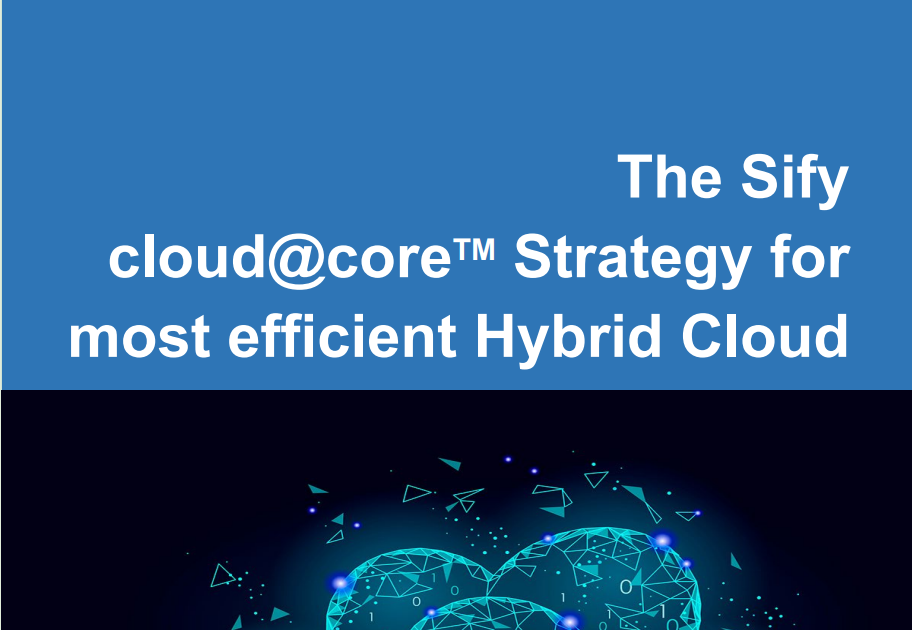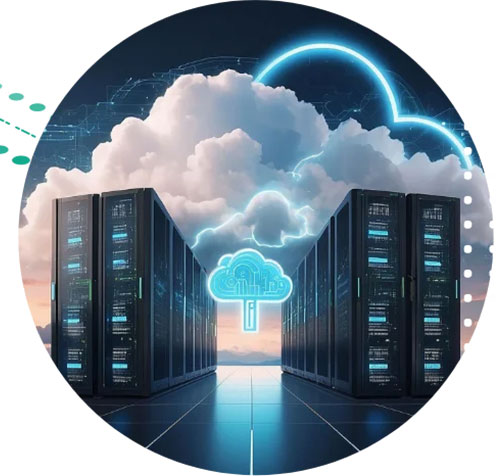Sify Technologies announces the launch of GPU Cloud Sify CloudInfinit<sup>+AI</sup>
Chennai, India, September 02, 2024: Sify Technologies Limited (NASDAQ: SIFY), India’s leading Digital ICT solutions provider with global service capabilities spanning data center, cloud, networks, security and digital services, today announced it has become an NVIDIA colocation partner with the NVIDIA DGX-Ready Data Center program, certified for liquid cooling.
Seamless Cloud to Edge Strategies: Unlocking Hybrid IT Potential in Manufacturing
SPEAKERS:
Anitosh Halder, SVP & Business Head – Cloud & IT Managed Services, Sify Technologies
Jitender Durairajan, Head Cloud Engineering & Solutions, Sify Technologies
Arvind Raman, Senior Solution Specialist: Data & AI, Microsoft
V Ranganathan Iyer, Sr. EVP- IT, Group CIO, JBM Group
Kapil Mehrotra, Group CTO & CISO, Dhanuka Agritech
Kauser Khan, Vice President Information Technology, Maruti Suzuki India
DATE:
June 6, 2024 | 3:00 PM
DESCRIPTION:
To maximize the benefits of digital initiatives across all operational areas, organizations must go beyond modernizing their core to include the edge environment. For manufacturing companies looking to migrate their ERP to cloud platforms such as Azure, the transition demands robust integration between cloud and edge operations for real-time data processing and collection.
Service providers play a crucial role in assessing the current IT landscape to proposing the best suited hybrid/multi-cloud strategy to drive innovation into key operational areas like warehousing and logistics at the edge.
Organizations require integrated solutions encompassing connectivity, security, and managed services to ensure low latency, compliance, efficient data analytics, and to harness AI’s potential. This dual focus on cloud and edge modernization translates technological investments into tangible business outcomes and operational efficiencies, setting the stage for future innovations.
What is hyperscale cloud?
Robust and reliable data centers are pivotal infrastructural backbones in ensuring the seamless operation of internet-based services, cloud computing, and end-to-end management of vast amounts of data.
A Comprehensive Guide to Hybrid/Multi Cloud Adoption and Management
Hybrid/multi cloud environments are at the forefront of enabling flexible, scalable, and customized software-defined and managed infrastructure solutions.
Next Generation Cloud
The Sify cloud@coreTM Strategy
Next Generation Cloud Architectures
The Emergence of Hybrid Multi Cloud Architecture
As organizations are constantly looking for riding the waves of innovation with the adoption of first-generation cloud services, the prevailing architectures did not completely answer the needs of their business-critical applications for compliance, performance and integration with ecosystems, not all of which could be migrated to the public cloud.
Download whitepaper
How IoT is transforming retail
How IoT is transforming retail
Retail is one of India’s largest Industry that contributes about 10% of the country’s overall GDP and generates 8% employment. Energy, Manpower and real estate are the major cost contributors in retail sector. The Industry consumes about 18% of electricity supplied in the country
Download whitepaper
Automated Recovery of SAP HANA Database using AWS native options
This blog exclusively covers the options available in AWS to recover SAP HANA Database with low cost and without using native HSR tool of SAP. With a focus on low costs, Sify recommends choosing a cloud native solution leveraging EC2 Auto Scaling and AWS EBS snapshots that are not feasible in an on-premises setup.
Solution Overview
The Restore process leveraging Auto Scaling and EBS snapshots works across availability zones in a region. Snapshots provide a fast backup process, independent of the database size. They are stored in Amazon S3 and replicated across Availability Zones automatically, meaning we can create a new volume out of a snapshot in another Availability Zone. In addition, Amazon EBS snapshots are incremental by default and only the delta changes are stored since the last snapshot. To create a resilient highly available architecture, automation is key. All steps to recover the database must be automated in case something fails or goes wrong.
Autoscaling Architecture
The following diagram shows the Auto Scaling architecture for systems in AWS.

Use Case
EBS Snapshots
Prior to enabling EBS snapshots we must ensure the destination of log backups are written to an EFS folder which is available across Availability Zones.
Create a script prior to the command to be executed for an EBS snapshot. By using the system username and password, we make an entry into the HANA backup catalog to ensure that the database is aware of the snapshot backup. We use the snapshot feature to take a point in time and crash consistent snapshot across multiple EBS volumes without a manual I/O freeze. It is recommended to take the snapshot every 8-12 hours.
Now the log backups are stored in EFS and full backups as EBS snapshots in S3 and both sets are available across AZs. Both storage locations can be accessed across AZs in a region and are independent of an AZ.
EC2 Auto Scaling
Next, we create an Auto Scaling group with a minimum and maximum of one instance. In case of an issue with the instance, the Auto Scaling group will create an alternative instance out of the same AMI as the original instance.
We first create a golden AMI for the Auto Scaling group and the AMI is used in a launch configuration with the desired instance type. With a shell script in the user data, upon launch of the instance, new volumes are created out of the latest EBS snapshot and attached to the instance. We can use the EBS fast snapshot restore feature to reduce the initialization time of the newly created volumes.
If the database is started now (recently), it would have a crash consistent state. In order to restore it to the latest state, we can leverage the log backup stored in EFS which is automatically mounted by the AMI. Additional Care to be taken so that the SAP application server is aware of the new IP of the restored SAP HANA database server.
Benefits
- Better fault tolerance – Amazon EC2 Auto Scaling can detect when an instance is unhealthy, terminate it, and launch an instance to replace it. Amazon EC2 Auto Scaling can also be configured to use multiple Availability Zones. If one Availability Zone becomes unavailable, Amazon EC2 Auto Scaling can launch instances in another one to compensate.
- Better availability – Amazon EC2 Auto Scaling helps in ensuring the application always has the right capacity to handle the current traffic demand.
- Better cost management – Amazon EC2 Auto Scaling can dynamically increase and decrease capacity, as needed. Since AWS has pay for the EC2 instances, billing model can be used to save money, by launching instances only when they are needed and terminating them when they aren’t.
Conclusion
This blog discussed how Sify can help SAP customers to save cost by automating recovery process for HANA database, using native AWS tools. Sify would be glad to help your organization as your AWS Managed Services Partner for a tailor-made SAP on AWS Cloud solution involving seamless cloud migration experience and for your Cloud Infrastructure management thereafter.
Fast-track your SAP’s Cloud Adoption on AWS, with Sify
Cloud computing (which later became known as just Cloud), one of the technology trends since last few years, has become a game-changer. Cloud offered a platform for organizations not just to host their applications but also to maintain it / manage it and charge organizations on a pay-per-usage model. This translated into getting rid of the Capex (Capital expenditure on hardware/servers) and instead, opting for the flexible Opex (Operating Expenses) model which also helped organizations in slashing the manpower budget.
The biggest advantage of Cloud is its scalability – freedom to add/reduce storage/compute/network bandwidth as per the need within an agreed SLA-framework.
The rise of Cloud adoption led to two categories:
- Cloud as a hosting platform
- Cloud-based software/applications
Cloud as a hosting platform
This is more popularly known as Platform-as-a-Service (PaaS) or Infrastructure-as-a-Service (IaaS) wherein the service provider offers bundled services of Compute, Storage, Network & Security requirements.
Cloud providers deliver a computing platform, typically including operating system, programming language execution environment, database, and web server. Application developers can develop and run their software solutions on a cloud platform without the cost and complexity of buying and managing the underlying hardware and software layers.
Based on the deployment options, Cloud is classified under Public, Private and Hybrid Cloud, which vary due to security considerations.
Why AWS
With some PaaS providers like AWS, the underlying compute and storage resources scale automatically to match application demand so that the cloud user does not have to allocate resources manually. They use a load balancer which distributes network or application traffic across a cluster of servers. Load balancing improves responsiveness and increases availability of applications.
As per a 2020 IDC study, over 85% of customers report cost reduction by running SAP on AWS.
Get consulting support, training, and services credits to migrate eligible SAP workloads with the AWS Migration Acceleration Program (MAP).
AWS has been running SAP workloads since 2008, meaningfully longer than any other cloud provider. AWS offers the broadest selection of SAP-certified, cloud-native instance types to give SAP customers the flexibility to support their unique and changing needs.
Whether you choose to lift and shift existing investments to reduce costs, modernize business processes with native AWS services, or transform on S/4HANA, reimagining is possible with SAP on AWS.
When you choose AWS, you will be joining 5,000+ customers who trust the experience, technology, and partner community of AWS to migrate, modernize, and transform their SAP landscapes.
AWS & Sify collaboration
While AWS has been a global leader in Public Cloud services, in India Sify Technologies (one of the pioneers in the ICT domain & India’s first SSAE-16 Cloud certified provider) had designed its own Cloud called ‘CloudInfinit’ way back in 2013 and since then has been helping diverse organizations in moving their ERP applications, especially SAP workloads to its Cloud, seamlessly.
With Sify’s cloud@core strategy, customers can enjoy all facets of Cloud with complete visibility and control.
SIFY’s SAP deployment flexibility ON CLOUD

SAP on AWS hybrid cloud solutions

Use Cases
- Lifecycle Distribution: Separate Development and Test Environments
- Workload Distribution
- High Availability Deployments
Business Benefits
- Best of breed performance with Hybrid Cloud configuration
- Efficient integrations with extended ecosystems
- Compliance with data sovereignty
- Business continuity with resilience
- Simplicity with self service
- Operational efficiency with reduced IT administration
- Cost reduction with on-demand bursting to public clouds
Migration methodology
For SAP Migrations from on-premises or from any other Cloud to AWS, depending on various parameters like Prod. database size, available downtime window, source/target operating system/database, connectivity/link speed etc., we have been using various ways for seamless migration briefly explained below.

SAP SYSTEMS monitoring
Once SAP workloads are moved to AWS, Sify’s Managed Services takes care of every aspect, including monitoring the Operating System, Database, Connectivity, Security, Backup etc. as per the agreed SLAs. It also monitors the mission-critical SAP systems closely as depicted in diagram below.

Conclusion
Cloud, the scalable, flexible and yet robust hosting platform allows you to use your ERP workloads as well as SaaS applications effectively. Going by the increasing number of customers moving to Cloud, it is certain that Cloud is not vaporware, it is here to stay and only to grow bigger and safer by the day! It would also necessitate organizations to chart out a Smart Cloud strategy.
Business use cases for high-performance computing
Emerging technologies such as IoT, Artificial Intelligence, and Machine Learning have not only changed the business dynamics but have been generating an exponential volume of data, posing difficulties in its management. Processing this exponential burst of data with varying workloads in a timely and cost-efficient manner requires modern systems like High Performance Computing (HPC). Despite being in its early adoption stage, HPC is quite promising, as it has the capability to solve emerging business problems. Many business use cases have been developed, capturing the attention of the enterprises across the globe. Some of these use-cases where HPC has helped enterprises solve their problems are discussed here.
Fraud detection in the financial industry
Financial frauds have rocked the world with their inventiveness and scale. Some high-profile frauds such as Ponzi schemes, misleading investment schemes, identity fraud, phishing, card fraud, counterfeiting, skimming, fake prizes, and inheritance scams have duped many unsuspecting investors or users. The Global Economic Crime and Fraud Survey conducted by PwC in 2018 reveals that 49% of the organizations faced an economic fraud in the previous two years. While 52% of these threats were internally born, 40% were from external sources.
With a centralized system of fraud detection, information can be gathered from all the available sources. This system can help detect and prevent cyber-attacks, improve data privacy, enhance data protection, and support the digital forensic investigation. Given the humongous volumes of data, the system that is installed must have the capability to detect anomalies and intrusion attempts. Legacy data centers, despite their high capacities, are incapable of handling such large volumes of data. In this scenario, High Performance Computing can prove to be a useful aid in modern fraud detection and risk modeling, thereby helping financial organizations detect attacks on their systems as they occur, preventing financial fraud. PayPal implemented an HPC environment, and within a year of its adoption, it was able to save $710 million that would have been stolen by cyber thieves.
Personalized healthcare and clinical research
Modern advancements in healthcare have helped in the development of many pharmaceutical drugs and in identifying treatment options for a variety of ailments. The adoption of information technology by physicians, surgeons, and other medical professionals has helped them deliver accurate and timely medical treatment to their patients. Advanced medical simulations are often employed to ascertain the positive and negative effects of medicines on a patient profile to determine the most effective treatment option. These simulations demand high computing power as a number of factors need to be taken into account. This is another area where High Performance Computing can come to the aid of medical professionals with its significant computational power. Medical professionals can drill down into patient information at the genomic level, using millions of data points to help diagnose and identify personalized treatments for the patient.
Large hospitals have been using HPC for research. TGen and NMTRC have together developed an HPC system to obtain insights in much faster time into cancer and pharmaceutical research. By using these systems, new drugs can also be discovered, and life-saving medical treatments can be identified and personalized.
Smart energy grids
Smart energy grids are deployed to reduce energy consumption and offer more flexibility and reliability than traditional grids. These grids help in supplying energy to millions of households by integrating multiple energy sources. In order to supply, optimize, and maintain energy efficiency for multiple cities and neighborhoods, a huge volume of data is captured from millions of devices, including individual meters and consumption devices. These devices can generate exabytes of data, for which enormous computing power is needed for processing. Traditional servers cannot fulfill this need. However, with HPC, a huge volume of data can be processed and analyzed with efficiency in real-time.
Manufacturing Excellence
Large manufacturing enterprises have already begun to make use of the power of HPC, which is used for IoT and Big Data analysis. Based on the analysis results, real-time adjustments are possible in processes and tools to ensure an improved design of a product, increased competitiveness, and faster lead times.
High Performance Computing is capable of running large simulations, rapid prototyping, redesigns, and demonstrations. An example could be a manufacturing unit that would improve its manufacturing flow with insights from the processing of 25,000 data points from customer intelligence. The first-ever autonomous shipping project of the world is making use of HPC computing, which involves processing a large amount of data collected from sensors. The data includes details of weather conditions, wave points, tidal data, and conditions of various systems installed.
High Performance Computing offers significant benefits over traditional computing for manufacturing enterprises. It can help an automobile unit vehicle maintenance. A wholesaler could optimize the supply chain as well as stock levels. HPC is also used in R&D. The innovative design of the 787 Dreamliner Aircraft by Boeing is a result of HPC-based modeling and simulation that helped the company conduct live tests on the aircraft to test the prototype.
HPC has become indispensable for enterprises to derive competitive advantage in the fast-growing business world and scaling technologies.
Sify Data Center and cloud services help you to centralize your IT infrastructure, operations, storage & management and enjoy tremendous scale and a lower cost of ownership. Our consultative solution approach helps you define a business technology strategy where delivery of services supports clear business outcomes.
Cloud Service Models Compared: IaaS, PaaS & SaaS
Cloud computing has been dominating the business discussions across the world as it is consumed by the whole business ecosystem and serves both small and large enterprises. Companies are faced with a choice between three predominant models of cloud deployment when adopting the technology for their business. A company may select from SaaS, PaaS, and IaaS models based on their needs and the capabilities of cloud service models. Each model has inherent advantages and characteristics.
SaaS (Software as A Service)
SaaS service models have captured the largest share in the cloud world. In SaaS, third-party service providers deliver applications while the access to them is granted to a client through a Web interface. The cloud service provider manages everything including hardware, data, networking, runtime, data, middleware, operating systems, and applications. Some SaaS services that are popular in the business world are Salesforce, GoToMeeting, Dropbox, Google Apps, and Cisco WebEx.
Service Delivery: A SaaS application is made available over the Web and can be installed on-premise or can be executed right from the browser, depending upon the application. As opposed to traditional software, SaaS-based software is delivered predominantly in subscription-based pricing. While popular end-user applications such as Dropbox and MS Office Apps offer a free trial for a limited period, their extended usage, integrations, and customer support could come at a nominal subscription cost.
How to identify if it is SaaS? If everything is being managed from a centralized location on a cloud platform by your service provider, and your application is hosted on a remote server to which you are given the access through Web-based connectivity, then it is likely to be SaaS.
Benefits: The cost of licensing is less in this model, and it also provides a mobility advantage to the workforce as the applications can be accessed from anywhere using the Web2. In this model, everything at the back-end is taken care of by the service provider while the client can use the features of specific applications. If there are any technical issues faced in infrastructure, the client can depend on the service provider to remove them.
When to Choose? You can choose this model if you do not want to take the burden of managing your IT infrastructure as well as the platform, and only want to focus on the respective application and services. You can pass on the laborious work of installation, upgrading, and management to the third-party companies that have expertise in public cloud management.
PaaS (Platform as A Service)
In the PaaS service model, the third-party service provider delivers software components and the framework to build applications while clients can take care of the development of the application. Such a framework allows companies to develop custom applications over the platform that is served. In this model, the service provider can manage servers, virtualization, storage, software, and networking while developers are allowed to develop customized applications. PaaS model can work with both private cloud and public cloud.
Service Delivery: A middleware is built into the model which can be used by developers. The developer does not need to do hard coding from scratch as the platform provides the libraries. This reduces the development time and enhances the productivity of an application developer enabling companies to reduce time-to-market.
How to identify if it is PaaS? If you are using integrated databases, have resources made available that can quickly scale, and you have access to many different cloud services to help you in developing, testing, and deploying applications, it is PaaS.
Benefits: The processes of development and testing are both cost-effective and fast. PaaS model delivers an operating environment and some on-demand services such as CRM, ERP, and Web conferencing. With PaaS, you can also enjoy additional microservices to enhance your run-time quality. Additional services can also be availed such as directory, workflow, security, and scheduling. Other benefits of using this service model include cross-platform development, built-in components, no licensing cost, and efficient application Lifecycle management.
When to Choose? PaaS is most suited if you want to create your application but need others to maintain the platform for you. When your developers need creative freedom to build highly customized applications and require you to provide tools for development, this would be the model to select.
IaaS (Infrastructure as A Service)
In this cloud service model, Data Center infrastructure components are provided including servers, virtualization, storage, software, and networking. This is a pay-as-you-go model which provides access to all services that can be utilized as per your needs. IaaS is like renting space and infrastructure components from a cloud service provider using a subscription model.
Service Delivery: The infrastructure can be managed remotely by a client. On this infrastructure, companies can install their own platforms and do the development. Some popular examples of IaaS service models are Microsoft Azure, Amazon Web Services (AWS), and Google Compute Engine (GCE).
How to identify if it is IaaS? If you have all the resources available as a service, your cost of operation is relative to your consumption, and you have complete control over your infrastructure, it is IaaS.
Benefits: A company need not invest heavily in infrastructure deployment but can use virtual Data Centers. A major advantage of this service model is that with it, a single API (Application Programming Interface) can be used to access services from multiple cloud providers. A virtualized interface can be used over pre-configured hardware, and platforms can be installed by a client. IaaS service providers also give you security features for the management of your infrastructure through licensing agreements.
When to Choose? IaaS service model is most useful when you are starting a company and need hardware and software setups for your company. You may not commit to specific hardware or software but can enjoy the freedom of scaling up anytime you need with this deployment.
You can choose between the three models depending on your business needs and availability of resources to manage things. Irrespective of the model you choose, cloud Data Center does provide you a great cost advantage and flexibility with experts to back you in difficult times. Your choice of the cloud service model would affect the level of control you have over your infrastructure and applications. Depending on the needs of your business, you can select a model after a careful evaluation of the benefits of each of the cloud service models.
Sify’s many enterprise-class cloud services deliver massive scale and geographic reach with minimum investment. We help design the right solution to fit your needs and budget, with ready-to-use compute, storage and network resources to host your applications on a public, private or hybrid multi-tenant cloud infrastructure.



































































